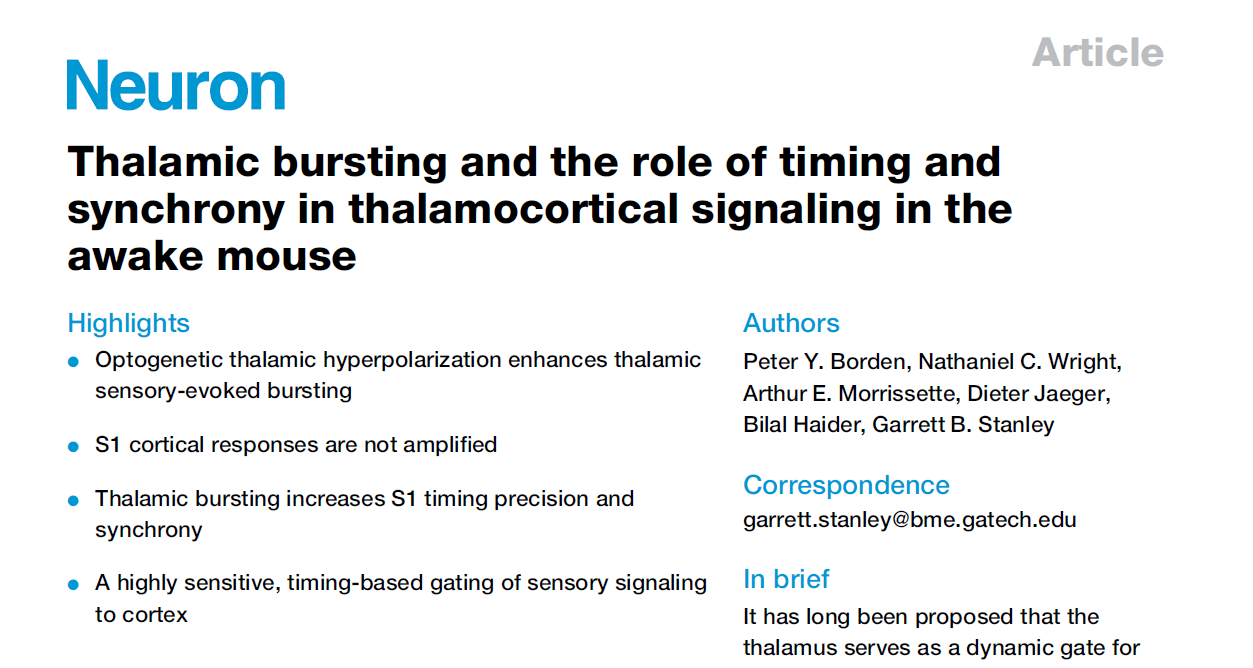Congratulations to former lab members Peter Borden and Caleb Wright in their recently published paper in Neuron entitled “Thalamic bursting and the role of timing and synchrony in thalamocortical signaling in the awake mouse” (Borden, Wright, et al., Neuron, 2022). This paper is also being featured in the News and … More Congratulations to Peter and Caleb for their recently published paper in Neuron!
Congratulations to Peter and Caleb for their recently published paper in Neuron!
Many Recent Papers to Celebrate!
The Stanley Lab had a busy 2021-2022, with many papers hitting the stands that represent the culmination of a ton of hard work. Good work, everyone! Here are the highlights: Y. J. Liew, A. Pala, C. J. Whitmire, W. A. Stoy, C. R. Forest, G. B. Stanley, Inferring thalamocortical monosynaptic connectivity in-vivo, … More Many Recent Papers to Celebrate!
Lab’s Nature Communications Paper Featured by Georgia Tech
Chris Waiblinger’s Nature Communications paper entitled, “Emerging experience-dependent dynamics in primary somatosensory cortex reflect behavioral adaptation,” was recently featured by the Department of Biomedical Engineering at Georgia Tech/Emory. Check out the article here!
New Publication – Robotic navigation to subcortical neural tissue for intracellular electrophysiology in vivo
Abstract: In vivo studies of neurophysiology using the whole cell patch-clamp technique enable exquisite access to both intracellular dynamics and cytosol of cells in the living brain but are underrepresented in deep subcortical nuclei because of fouling of the sensitive electrode tip. We have developed an autonomous method to navigate electrodes … More New Publication – Robotic navigation to subcortical neural tissue for intracellular electrophysiology in vivo
New Publication – Response reliability observed with voltage-sensitive dye imaging of cortical layer 2/3: the probability of activation hypothesis
A pervasive underlying assumption about sensory processing is that neural activity represents the world in a graded manner: the stronger the input, the stronger the response; the weaker the input, the weaker the response. In work from Dr. Clare Gollnick and colleagues, this assumption was directly considered and investigated through … More New Publication – Response reliability observed with voltage-sensitive dye imaging of cortical layer 2/3: the probability of activation hypothesis





